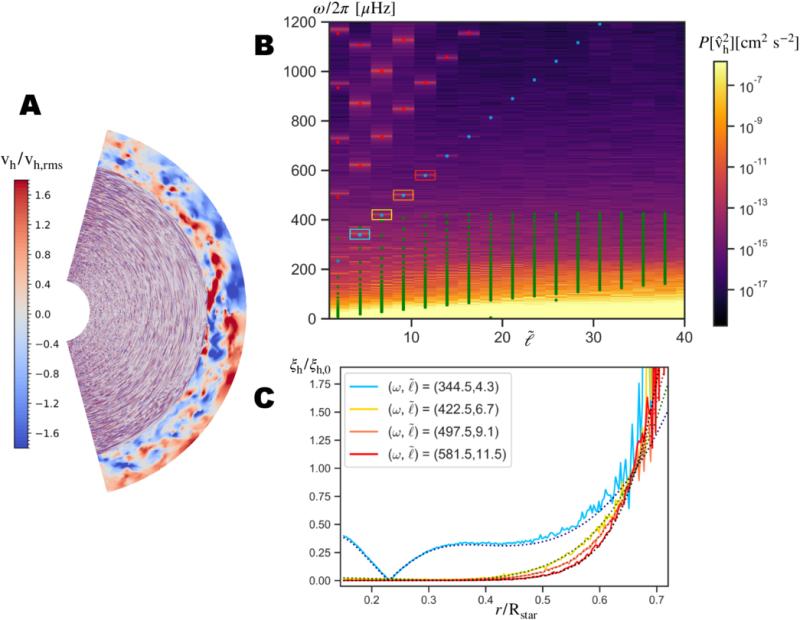CNRS press release dated 23 July 2025. Based on a scientific publication to which members of the Lyon Astrophysics Research Centre (CNRS, ENS de Lyon, Claude Bernard University) and the LPENSL Physics Laboratory (CNRS, ENS de Lyon) contributed: ‘A Core-sensitive Mixed f/g-mode of the Sun Predicted by Wave Topology and Hydrodynamical Simulation’, published in The Astrophysical Journal Letters.
Essential to understanding the evolution of our star, the physics of the Sun's core remains difficult to access through direct observation. In a study published in The Astrophysical Journal Letters, a French team has identified a previously unknown solar oscillation, lasting approximately one hour, capable of revealing the dynamics of the Sun's deep core. This discovery is based on an original approach combining compressible hydrodynamic simulations and concepts of topological quantum physics.
The Sun is far from being a completely immobile ball of gas; it is animated by permanent vibrations generated by the convective motions of hot gases on its surface. These vibrations form a set of frequencies that characterise the Sun's spectrum, similar to the tone of a musical instrument. This frequency spectrum is analysed in the field of helioseismology.
Among these frequencies, scientists have identified a particular solar oscillation, coupling gravity waves (g) and compressible waves (f).

More information on the CNRS website
Référence
A Core-sensitive Mixed f/g-mode of the Sun Predicted by Wave Topology and Hydrodynamical Simulation. Arthur Le Saux, Armand Leclerc, Guillaume Laibe, Pierre Delplace, and Antoine Venaille. The Astrophysical Journal Letters, 2025. DOI: 10.3847/2041-8213/ade396
CNRS laboratories involved:
- Astrophysics, Instrumentation, Modelling (AIM) Supervising bodies: CEA, CNRS, Paris-Saclay University
- Laboratory of Dynamic Meteorology (LMD) Supervising bodies: CNRS, École Polytechnique, ENS-PSL, Sorbonne University
- Lyon Astrophysics Research Centre (CRAL) Supervising bodies: CNRS, ENS de Lyon, Claude Bernard University
- Physics Laboratory (LPENSL) Supervising bodies: CNRS, ENS de Lyon






